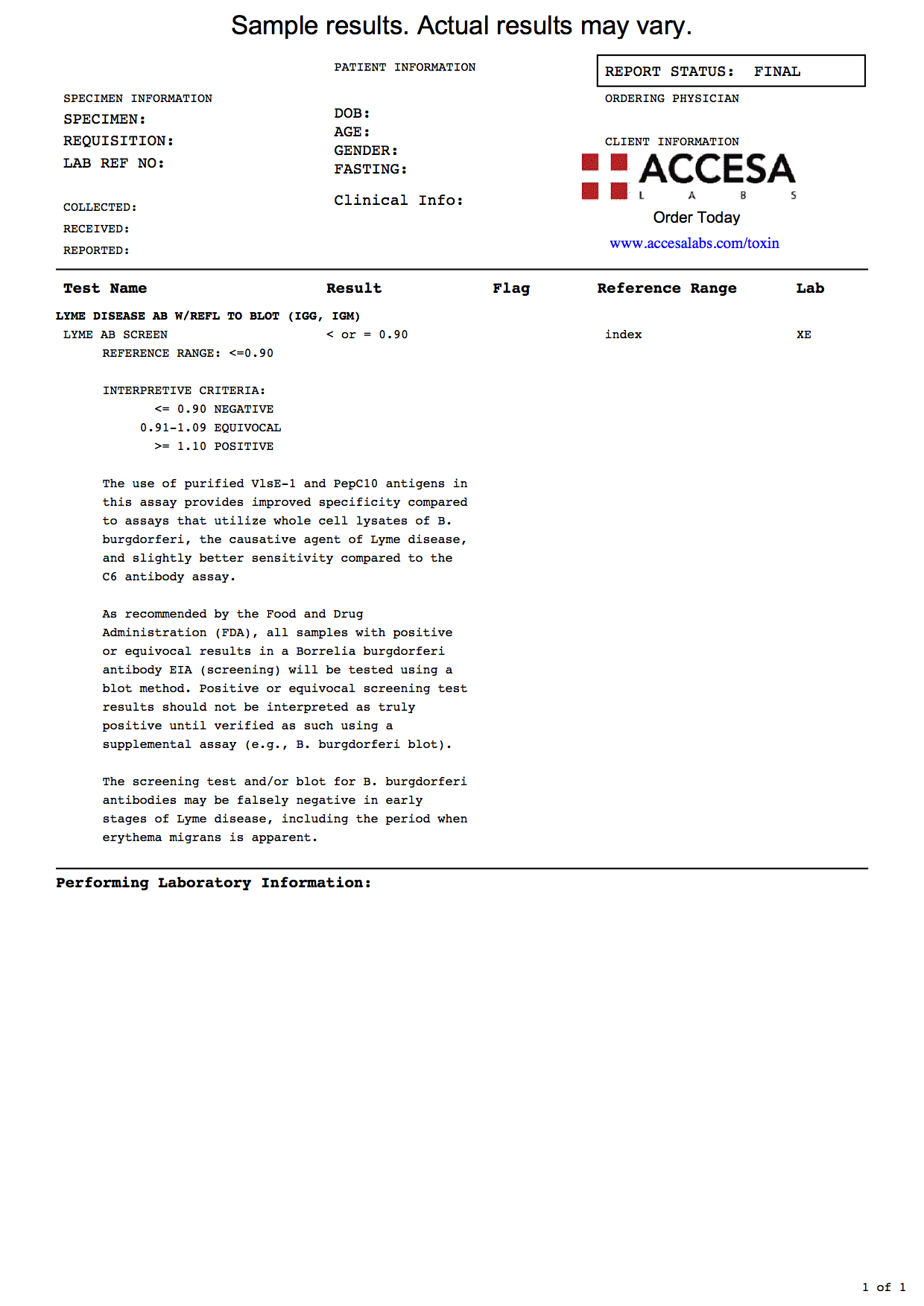
Presence of other infections or pre-existing conditions – Infection with other related pathogens (e.g. History of antibiotic treatment – This can compromise the immune response to infection and may affect the interpretation of test results.ģ.

Detailed travel history and date of onset of symptoms – This should be included on the requisition as it helps to apply the most appropriate testing algorithm.Ģ. Demonstration of seroconversion from IgM to IgG antibodies by WB provides definitive evidence of a recent infection.ġ. A positive WB result is required to confirm exposure to B. burgdorferi, and can differentiate IgM from IgG antibodies. WB detects IgM and or IgG antibodies that are directed against electrophoretically separated antigen extracts and recombinant antigens native to B. WB is used as the confirmatory test as it has greater specificity than EIA. While most EIAs are highly sensitive they may lack specificity, in that false positives results can occur due to other medical conditions. EIAs rely on the use of whole-cell preparations of B. For instance, if LD is suspected on the basis of symptoms but early serological testing is negative, follow-up testing on a convalescent sample is recommended.ĮIAs are used as screening tests to detect IgM andor IgG antibodies that are directed against B. Serology provides a snapshot of the immune status of the patient at the time of the specimen collection. When the above tests are performed in sequence the overall sensitivity and specificity are maximized.

This consists of an enzyme immunoassay (EIA) screening followed by confirmation with Western blot (WB) testing for the detection of IgM and or IgG antibodies. Following IgM response IgG antibodies develop in most patients, typically after one month of infection.Ī two-tiered serology testing is recommended for LD diagnosis. These antibodies may persist for months or even years despite effective antimicrobial therapy. burgdorferi infection begins with the appearance of IgM antibodies, usually within two weeks of a vector tick bite. ***NAAT or bacterial culture are not generally performed. **Where appropriate, EIA is followed by confirmatory WB using diagnostic kits licensed in Canada. burgdorferi cycles of transmission are maintained. *Endemic areas are localities where blacklegged ticks are established and B. Persistent symptoms following recommended treatment

Specimens of Choice for Diagnostic TestingĮrythema migrans, acute phase-Seasonal occurrence and exposure in an endemic area *Ĭlinical diagnosis and empirical treatmentĮrythema migrans, acute phase- Out of season or no known exposure in an endemic areaĢ-tiered serology ** – Repeat EIA in six weeks if negative treatment at physician’s discretion.***Ĭharacteristic neurological, cardiac or joint involvement Recommended Clinical Management and Testing Strategy However, testing should be limited to those with objective signs of infection. Borrelia burgdorferi is the causative agent of LD. Test sensitivity improves as the agent affects tissue systems other than the skin. A presumptive diagnosis can be made on the basis of the clinical presentation and a credible history of exposure to infected blacklegged vector ticks.ĭiagnostic testing is appropriate for people with a history of tick exposure and symptoms of disseminated LD. Aiding in the diagnosis of Lyme Disease (LD).Įarly localized Lyme disease does not require diagnostic testing before antibiotic therapy is started.


 0 kommentar(er)
0 kommentar(er)
